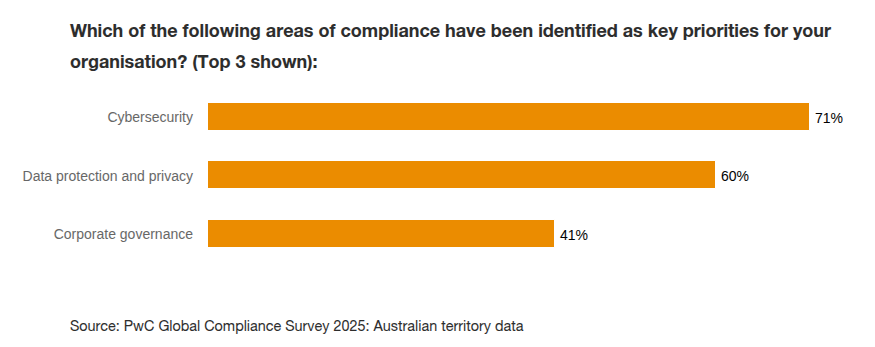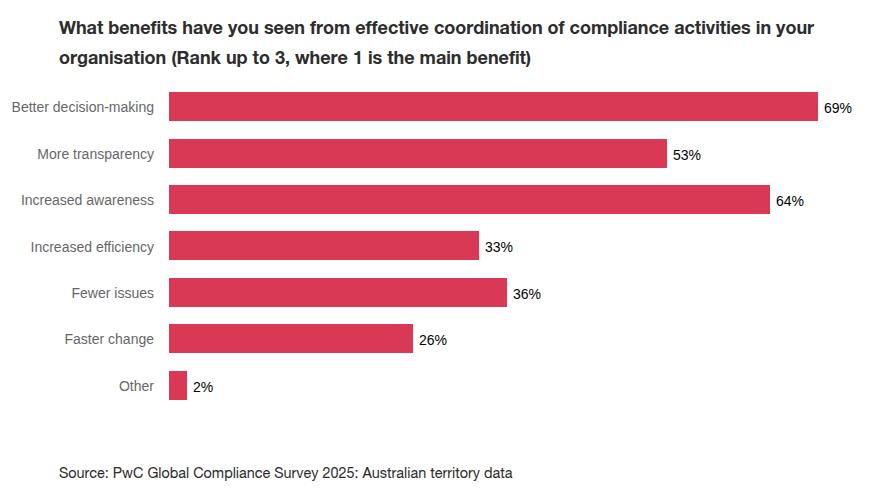Compliance Training – Key Trends and Drivers in 2025.
The Corporate Training market is expected to grow to $514.02 billion in 2029. Whether technical skills, soft skills or mandatory compliance training – all forms of employee training are becoming increasingly important, yet more complex to implement. The “megatrends” such as technological disruption, climate change and demographic shifts, make corporate training necessary for companies’ sustained performance and growth. Businesses need to become more agile, adapt and transform faster, while responding to ever-evolving, stricter regulations all at the same time.
In addition, keeping employees engaged, is proving more difficult than ever. Beyond mandated compliance training, senior leaders need to look into new creative ways to develop a ‘culture of learning and responsibility’ in their organisation.
From one-size fits all to role based training.
Role-based training methodology (rather than a one-size fits all approach) is probably one of the most important things you can implement when it comes to engaging and effective workplace training. This means customising content and requirements to different job roles.
You may be doing this already for very specific training that’s applicable to certain roles. However, when it comes to training that applies to all employees in the company, cyber security for example, many organisations still have a blanket approach – offering the same content, and having the same requirements for all. This disregards the different levels of understanding, use cases and risk factors across different departments and individual roles.

Above: According to PWCs Australian Compliance Survey, Cybersecurity tops the risk priorities for executives. Source: https://www.pwc.com.au/assurance/global-compliance-survey-australian-insights.html
Let’s look deeper into cyber security training as an example. One exercise companies do as part of their ongoing cyber security training is simulated phishing campaigns. This approach involves the security team sending semi-believable phishing messages to the workforce, attempting to dupe them into following a a malicious website link and enter their credentials . The workers that follow the link are then ‘punished’ by being redirected to a security awareness training module that explains what they did wrong. Spare the rod and spoil the child, right? Wrong.
Feedback shows that the ‘catch them out’ approach does nothing but alienate your team, it shatters their confidence and their trust. They feel victimised by the organisation that’s meant to support them. This cannot be good for engagement or for promoting a culture of learning.
In addition, a human error can have many contexts which need to be taken into account. Not only differing individual perspectives but things like:
- the time of the day the test phishing link was sent out
- phase of compliance or reporting cycles, and
- current well-being of each employee
These can have an impact on the a person’s judgment and action at any given time. The same person might recognise and take appropriate action to the phishing attempt first thing in the morning, but after lunch, or before they head home after a particularly stressful day, they may not be so vigilant; so, what has that test really achieved?
Some of the most devastating cyber attacks of all time came into organisations through teams who simply weren’t aware they were being targeted. Not everyone is a big user of IT, some jobs are focused on interactions with people, others are consumed with very specialised responsibilities. Any of these people can easily become targets. However, they might not understand the extent of the access their job affords them to cyber criminals.
Workplace training done better.
You need to connect with your staff on a more personal level. Rather than dumping how to guides onto every team member, use your learning management system (LMS) to provide interactive training that engages your learners with content and situations that relate to them, in their unique roles and working environments.
Creating context that resonates with individual learners is key to raising their awareness and their responsibility. Your staff can become champions of security in their own environment. They may even become advocates and help improve your company culture.
Research has shown, that a well coordinated, ‘connected compliance’ strategy enables better decision making and positively influences various other business aspects.

Minimal input equals minimal output.
Mandating that all employees watch a 90-minute video once a year, pass the quiz, and then rinse and repeat is not enough. Increasingly, companies invest resources in strategies and tools to maximise the effectiveness of corporate training; as well as to measure their efforts more properly for effective reporting and compliance requirements.
For better engagement, high performing compliance programs incorporate things like:
- Tailored (role-based) content – based on roles, risk exposure, geographies etc.
- Adaptive learning paths – skipping content that was passed, and focusing on new modules / gaps only
- Using refresher micro-training – offering shorter courses spread throughout the year
- Incorporating learning in workflows by implementing notifications and reminders
- Using gamification and scenario based training
- Making sure training is accessible to different learning styles and people with disabilities
- Ongoing content review and improvements
For all the above, as well as for greater, centralised control and better reporting, organisations need good learning management software that supports:
- centralised content libraries
- interactive content
- adaptive paths
- multi-tenancy features
- accessibility features
- dynamic rules
- compliance dashboard
- analytics and tracking
Effective compliance training with Moodle Workplace.
Moodle Workplace offers comprehensive solutions that simplify, automate, and help track progress in a compliance training process. It includes features such as certifications, learning catalogue and multi-tenancy. In addition, Moodle Workplace is WCAG 2.1 AA accessibility compliant.
A trusted learning management solution, Moodle Workplace is used by a variety of organisations including: government, health, manufacturing and retail. In addition, Moodle Workplace is proving to be a more suitable solution (instead of the traditional Moodle LMS solution) for some education providers who cater for a variety of learner audiences e.g. who offer micro-credentialing and executive education in addition to full degrees.
Can the right choice of workplace LMS help resolve compliance training challenges?
Not everything is handled by technology alone, you do need humans in the loop, but the right software will help with many of the above listed aspects. We’ve written another blog about this previously which you can check out here. Also see ‘Digital and Culture Shifts: the what and who of your organisation’s transformation and ongoing success’.
Whether technical skills, soft skills or mandatory compliance training – all forms of employee training are becoming increasingly important, yet more complex to implement. If you are responsible for your organisation’s compliance training, or employee learning and development more broadly, we recommend you consult with a technology partner who has experience with similar projects – industry and / or scale wise.
By selecting the right tech partner for your organisation’s e-learning needs, you will leverage their expertise, learn quicker and be able to build a digital ecosystem that will help your people and your business to thrive.
Our client success story:
Create role based training functionality for your LMS
Catalyst IT is an award winning, multi-award winning Premium Moodle Partner. We work with enterprise level Moodle Workplace environments to create new functionality, integration and performance optimisation, helping our clients meet their compliance obligations and their learning and development goals.
Speak to our team today about your workplace learning technology needs.
You may also like:
Continuous education and employee engagement

